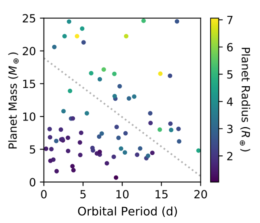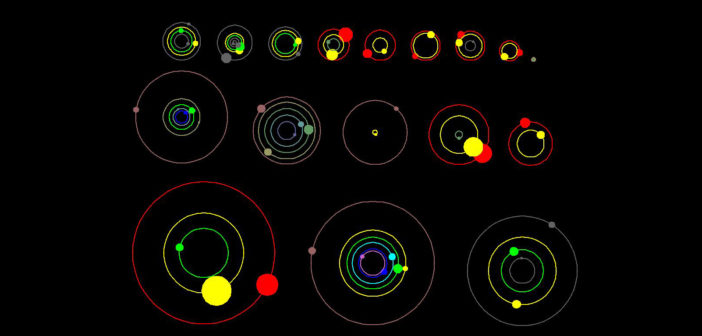Knowing which planets can form will help us understand how planets form. So as we discover more and more exoplanets, one must wonder: what if there are certain types of planets that just don’t exist?
Good Form
We know of over 4,000 confirmed exoplanets and nearly as many exoplanet candidates. With a population of this size, we can look for trends in exoplanet characteristics much more easily than we could a decade ago.
The most helpful quantities in this regard are planet radius, planet mass, and orbital period. Plotting these quantities against each other has revealed an abundance of certain planets — like Jupiter-sized planets with short orbits — and a dearth of others. Direct analogs to Neptune appear to be missing, though Neptune-sized planets with shorter periods are common.

Earth-like planets discovered by Kepler, pictured next to the Earth. [NASA/JPL-Caltech]
Mind the Gap!
Armstrong and collaborators looked at a sample of planets with mass under 25 Earth-masses and orbital periods of less than 20 days. Plotting mass versus orbital period yielded a gap that split their sample into two. The gap was more distinct for planets whose inclinations — and, by extension, planet radii — were known.
Given how many observational biases were involved, the authors chose to investigate the presence of the gap rather than its properties. The authors were especially concerned about whether different methods of mass determination all still produced the gap. A statistical test showed that it persisted regardless of method.

Planet mass in Earth-masses versus orbital period in days for the sample for which inclination was
known. The gap is illustrated with the dashed gray line. The color of the points relates to planetary radius.
The abundance of small, less massive planets below the gap suggests that the gap could be attributed to
photoevaporation. [Armstrong et al. 2019]
In light of this, what could be causing the gap?
Why the Gap?
The authors injected other properties of planetary systems into their mass–period plots. The gap appears impartial to nearly everything, showing trends only with planetary radius. This mild relationship could be due to photoevaporation, the process by which radiation from the host star strips gas off nearby objects. In the case of exoplanets, photoevaporation could shrink a gas giant planet — possibly to its rocky core.
In multi-planet systems, the most stable orbits may be those that don’t put planets in the gap. Another possibility is that stable regions in a system shift as it evolves.
The only way to better understand the gap is to find more exoplanets, which is just what TESS and other efforts are doing. Stay tuned!
Citation
“A Gap in the Mass Distribution for Warm Neptune and Terrestrial Planets,” David J. Armstrong et al 2019 ApJL 880 L1. doi:10.3847/2041-8213/ab2ba2
